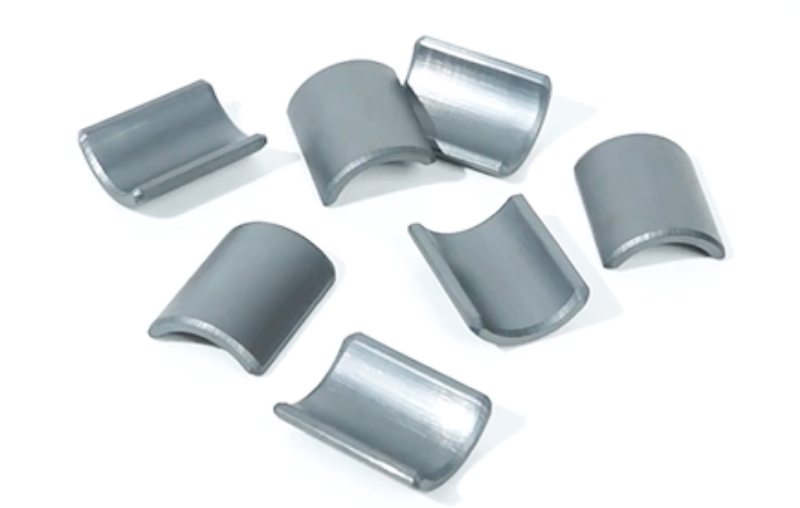Neodymium Iron Boron (NdFeB) is a type of permanent magnet made from rare earth metals. NdFeB magnets are widely used in various industries, including the automotive, aerospace, medical, and electronics industries, due to their high magnetism and high energy density. Three common manufacturing methods for NdFeB magnets include sintered NdFeB, bonded NdFeB, and hot-pressed NdFeB. This article will introduce the differences between these three methods, their respective applications, and related knowledge.
Sintered NdFeB
Sintered NdFeB magnets are made by powder metallurgy techniques. NdFeB alloy powder and other additives are mixed and then pressed into a specific shape. The mixed powder is then sintered at a high temperature to create a solid magnet. After sintering, the magnet goes through several different machining processes to achieve the desired shape and tolerances. Sintered NdFeB magnets have high coercivity, magnetic remanence, and energy products. They are also resistant to demagnetization, oxidation, and corrosion.

Applications: Sintered NdFeB magnets are widely used in various applications where high magnetic strength is required. They can be used in renewable energy systems, such as wind turbines and electric vehicles, as well as in industrial applications, such as motors, generators, and sensors.
Bonded NdFeB
Bonded NdFeB magnets are produced by blending NdFeB magnetic powder with a polymer binder, such as epoxy, and then shaping the mixture using compression molding. The magnets are then cured in a low-temperature oven to harden the binder. After curing, the magnets are machined to the required size and shape. Bonded NdFeB magnets have lower magnetic properties than sintered magnets, but they have good mechanical properties, such as toughness, flexibility, and low density.
Applications: Bonded NdFeB magnets are widely used in applications where high dimensional precision, complex shapes, or lower magnetic strength are required. They are commonly used in consumer electronics, such as hard drives, speakers, and headphones, as well as in medical devices and sensors.
Hot-Pressed NdFeB
Hot-pressed NdFeB magnets are produced by compacting NdFeB powder into a specific shape and then pressing it into a solid magnet at high temperatures and pressures. The magnet is then machined to the required size and shape. Hot-pressed NdFeB magnets have high magnetic properties, such as coercivity, magnetic remanence, and energy products. They are also resistant to demagnetization, oxidation, and corrosion.
Applications: Hot-pressed NdFeB magnets are used in applications where high magnetic strength, dimensional precision, and thermal stability are required. They are commonly used in high-power motors, generators, and magnetic bearings.
In summary, sintered, bonded, and hot-pressed NdFeB magnets all have their respective advantages and disadvantages in terms of magnetic properties, mechanical properties, and manufacturing cost. Choosing the right type of NdFeB magnet depends on the application, design requirements, and budget. NdFeB magnets are expected to play an important role in numerous industries in the future due to their unique magnetic properties and high energy density.
 By Admin
By Admin

